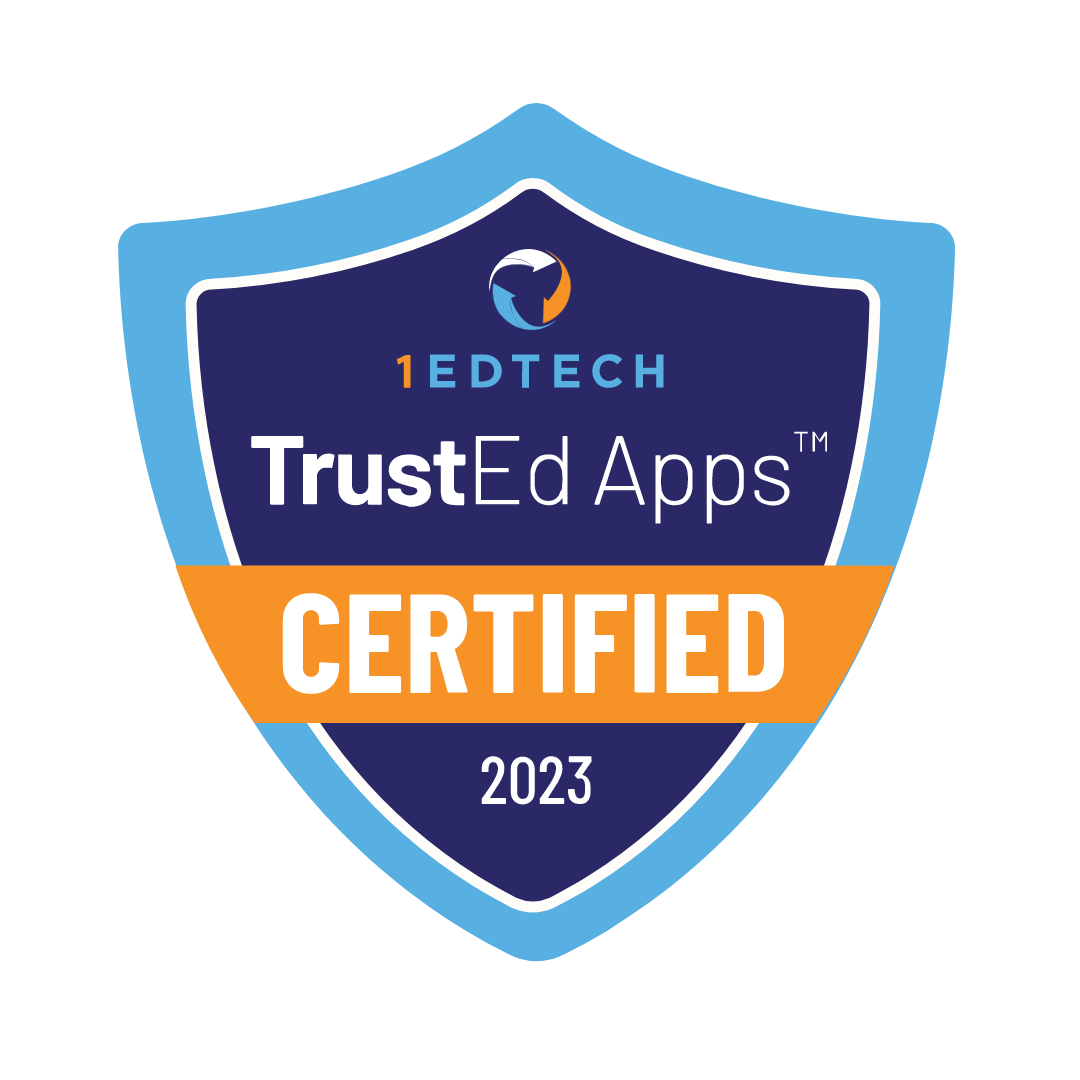Contents
- 1 Las ventajas de la educación en línea para los alumnos autistas
- 2 Preparar a los alumnos con autismo para la enseñanza en línea
- 3 Utilización del aprendizaje interactivo en la enseñanza virtual
- 4 Adaptar el plan de estudios a las necesidades especiales
- 5 Potenciar las habilidades sociales mediante la enseñanza virtual
- 6 Apoyo de padres y profesores en la educación virtual
La educación en línea tiene el potencial de ser un apoyo para los estudiantes con autismo. Este enfoque innovador del aprendizaje permite flexibilidad tanto en el horario como en el ritmo, lo que permite a estos alumnos estudiar en los momentos en que se sienten más concentrados y cómodos. Además, estar en su entorno familiar puede ayudar a reducir la sobrecarga, un problema habitual en las aulas tradicionales. Una ventaja notable son las lecciones que se adaptan específicamente a las necesidades de aprendizaje de cada estudiante, lo que mejora su trayectoria educativa en general. Por otra parte, alejarse de la atmósfera de una escuela normal puede aliviar significativamente los niveles de ansiedad, creando un ambiente más tranquilo que promueve la interacción con la tecnología, un elemento esencial del aprendizaje en línea.
Optar por una escuela adaptada para niños con autismo puede ofrecer un entorno de aprendizaje personalizado y adaptable, diseñado para satisfacer eficazmente las necesidades individuales de cada niño. Proporciona vías de atención, servicios como logopedia y asesoramiento y la oportunidad de aprender desde casa u otros lugares remotos – especialmente beneficioso para los niños que pueden luchar con la sobrecarga sensorial, en entornos escolares tradicionales.
Las ventajas de la educación en línea para los alumnos autistas

La educación en línea ofrece ventajas que se adaptan a las necesidades de los estudiantes con autismo. Una ventaja clave es la flexibilidad que proporciona. A través de los cursos, los alumnos tienen la libertad de organizar sus horas de estudio en función de cuándo se sienten más atentos y cómodos, lo que les permite tomarse descansos y cambiar de tarea según sea necesario.
Además, estudiar en casa puede reducir enormemente el agobio en comparación con un entorno escolar tradicional. El hecho de poder controlar el entorno y reducir al mínimo las distracciones ayuda a mejorar la concentración, lo que favorece el aprendizaje.
Por ejemplo, algunos estudiantes autistas pueden encontrar angustiosa la luz fluorescente o los ruidos fuertes, lo que afecta a su concentración y compromiso con los estudios. Aprender en casa les permite crear un entorno sensorialmente favorable que favorece su aprendizaje y reduce la ansiedad.
Además, la educación a medida desempeña un papel crucial en el éxito de la escolarización en línea para alumnos autistas. Los planes de aprendizaje personalizados se adaptan a las necesidades y estilos de aprendizaje individuales, garantizando que los requisitos educativos de cada alumno se cumplan eficazmente en un entorno cómodo.
Este enfoque a medida permite a los educadores crear un plan de estudios individualizado que aborde los puntos fuertes y los retos del alumno y se adapte a los distintos estilos de aprendizaje. Promueve una forma más especializada de educación personalizada para las necesidades únicas de cada alumno.
Mientras que algunos podrían argumentar que la falta de interacción cara a cara podría obstaculizar el desarrollo social, es esencial reconocer que para muchos estudiantes autistas, los entornos escolares tradicionales a menudo pueden exacerbar la ansiedad debido a las interacciones sociales y la sobrecarga sensorial. Por lo tanto, una menor ansiedad derivada de la escolarización en línea puede ayudar realmente a los alumnos autistas. Puede mejorar su bienestar y sus notas.
En esencia, los beneficios que ofrece la escolarización en línea allanan el camino para un entorno de aprendizaje de apoyo en el que los alumnos autistas puedan prosperar, ofreciendo una educación a medida, reduciendo la sobrecarga sensorial, disminuyendo la ansiedad y proporcionando la flexibilidad necesaria para una experiencia educativa óptima.
A continuación, vamos a explorar las estrategias y consideraciones necesarias para preparar a los alumnos autistas para una escolarización en línea satisfactoria.
Preparar a los alumnos con autismo para la enseñanza en línea

El paso al aprendizaje plantea dificultades a los alumnos con autismo. Es esencial atender sus necesidades y ofrecerles la ayuda necesaria para guiarles en este entorno en línea.
Familiarizarse con la tecnología
Antes de empezar las clases, es esencial que los alumnos se familiaricen con las herramientas y plataformas utilizadas en la enseñanza en línea. Esta familiarización puede aliviar la ansiedad y fomentar la confianza en la navegación por el aula virtual.
Consejo rápido: Considere la posibilidad de crear un «recorrido tecnológico» en el que el alumno pueda explorar las distintas funciones de la plataforma en línea a su propio ritmo. Las ayudas visuales, como capturas de pantalla o tutoriales en vídeo, pueden ser especialmente útiles en este proceso.
Establecer rutinas
La constancia es clave para los alumnos con autismo, por lo que establecer una rutina diaria puede proporcionarles una sensación de estructura y familiaridad en medio de la transición a la escolarización en línea. Crear horarios visuales o listas de control puede ayudar a los alumnos a anticiparse a lo que viene a continuación y minimizar la ansiedad ante lo desconocido.
Es importante recordar que pueden ser necesarios ajustes en función de las necesidades individuales de cada alumno. Por ejemplo, algunos estudiantes pueden beneficiarse de descansos en momentos específicos del día, mientras que otros pueden apreciar un «tiempo de silencio» designado para el trabajo individual.
Habilidades de comunicación
En el ámbito de la educación, los alumnos con autismo pueden enfrentarse a obstáculos debido a los métodos de comunicación utilizados. Es crucial que profesores y padres den prioridad al desarrollo de estas habilidades en un entorno de aprendizaje.
Un enfoque eficaz es fomentar los hábitos de comunicación ofreciendo narraciones o ejemplos que demuestren interacciones virtuales. Estas herramientas pueden ayudar a los alumnos a familiarizarse con situaciones como participar en debates, durante videoconferencias o unirse a proyectos de grupos virtuales.
Además, ofrecer orientación sobre cómo expresar preocupaciones y pedir ayuda en un entorno virtual es esencial para fomentar la independencia y las habilidades de autodefensa.
Al abordar estos aspectos críticos, podemos ayudar a garantizar que los alumnos con autismo estén bien preparados para prosperar en su viaje de aprendizaje en línea.
Mientras seguimos explorando cómo mejorar el aprendizaje virtual, pasemos al poder de utilizar el aprendizaje interactivo en la escolarización virtual.
Utilización del aprendizaje interactivo en la enseñanza virtual

Cuando se trata de la escolarización en línea de alumnos con autismo, la incorporación de experiencias de aprendizaje interactivo es clave para mantenerlos comprometidos y ayudarles a aprender. He aquí algunas formas eficaces de utilizar estrategias de aprendizaje interactivo:
Ayudas visuales
El uso de ayudas puede mejorar mucho la experiencia de aprendizaje de los alumnos con autismo. Los vídeos, los diagramas interactivos y las simulaciones virtuales son herramientas que pueden hacer las clases más atractivas y ayudar a los alumnos a comprender conceptos más fácilmente. Por ejemplo, los vídeos animados que ilustran procesos o acontecimientos históricos pueden simplificar la información. Hacerlo más ameno, para los alumnos autistas. Es como si el aula se llevara directamente a sus casas, haciendo que el aprendizaje sea divertido y accesible. Estos elementos visuales se adaptan a sus métodos de procesamiento de la información.
Gamificación del aprendizaje
Introducir juegos educativos y actividades interactivas puede transformar el proceso de aprendizaje en una experiencia agradable y atractiva para los alumnos con autismo. Los juegos educativos no sólo refuerzan el aprendizaje, sino que también proporcionan una sensación de logro cuando alcanzan hitos. Imagínese resolver enigmas matemáticos o descubrir misterios históricos a través de juegos interactivos: es aprender sin tener la sensación de estar aprendiendo.
La gamificación también puede funcionar como una gran herramienta de motivación para los alumnos autistas. Cuando ven su progreso mientras juegan a juegos diseñados con fines educativos, puede aumentar su confianza e inspirarles a seguir aprendiendo.
Enfoques multisensoriales
Incluir tareas que impliquen sentidos como el tacto, la vista y el oído puede adaptarse a las preferencias de aprendizaje de los alumnos con autismo. Por ejemplo, la utilización de materiales manuales para los ejercicios o la integración de componentes musicales y sonoros en las lecciones pueden proporcionar un encuentro de aprendizaje.
Este método es especialmente ventajoso, ya que aborda los diversos enfoques de aprendizaje que se observan a menudo en las personas con autismo. Al implicar los sentidos en el proceso, los profesores pueden crear un entorno acogedor e integrador que se adapte a las necesidades específicas de cada alumno.
La utilización de estos métodos de aprendizaje interactivo no sólo enriquece la experiencia educativa de los alumnos con autismo, sino que también fomenta un entorno escolar virtual de apoyo que estimula la participación activa y los resultados de aprendizaje significativos.
La aplicación de estas técnicas de aprendizaje interactivo es una señal alentadora en el camino hacia la creación de un sistema educativo totalmente accesible, que se adapte perfectamente a las diversas necesidades individuales. Pasemos a la siguiente sección, en la que exploraremos los métodos. Éstos tienen por objeto adaptar los planes de estudios a las necesidades específicas de los alumnos con necesidades especiales.
Adaptar el plan de estudios a las necesidades especiales

Cuando se trata de la educación de niños con autismo, es fundamental contar con planes de aprendizaje personalizados. Cada niño tiene sus puntos fuertes y sus dificultades, por lo que el material didáctico debe adaptarse a sus capacidades. A menudo esto significa ajustar la velocidad, la secuencia o el nivel del plan de estudios para garantizar que satisface las necesidades y capacidades del niño.
Por ejemplo, a un alumno se le pueden dar muy bien las matemáticas. Pero la comprensión lectora le resulta difícil. En ese caso, el plan de aprendizaje personalizado se centraría en las lecciones de matemáticas, al tiempo que ofrecería ayuda y recursos para mejorar las destrezas de lectura a un ritmo adecuado para el alumno.
Los materiales respetuosos con los sentidos desempeñan un papel fundamental en la creación de un entorno inclusivo y de apoyo para los alumnos con autismo. Estos materiales pretenden minimizar la sobrecarga sensorial ofreciendo alternativas a los contenidos sonoros como materiales basados en texto o viceversa. Además, la incorporación de ayudas visuales e instrucciones simplificadas puede beneficiar enormemente a los alumnos que pueden tener dificultades para procesar instrucciones verbales o una sobrecarga de información.
Es importante reconocer que el aprendizaje en línea ofrece oportunidades únicas para adaptar la educación a las necesidades individuales. Por ejemplo, si a un estudiante le cuesta comunicarse por escrito pero destaca en la interacción verbal, la incorporación de tareas o debates en vídeo puede ser una valiosa alternativa a las tareas escritas tradicionales.
Los recursos de apoyo, incluidos los materiales de práctica adicionales adaptados a las necesidades específicas del alumno, son esenciales. Por ejemplo, proporcionar libros de alto/bajo nivel para los niveles de lectura más bajos o manipulativos para los alumnos con dificultades en matemáticas puede mejorar la experiencia de aprendizaje de los alumnos con autismo. Estos recursos complementarios no sólo se adaptan a los diversos estilos de aprendizaje, sino que también capacitan a los alumnos al adaptarse a sus necesidades individuales.
Piense en esto: Un sastre confecciona un traje a medida para que se ajuste al cuerpo y estilo únicos de una persona. Los educadores deben confeccionar el plan de estudios como una prenda a medida. Deben adaptarlo al aprendizaje individual del alumno.
Adaptar el plan de estudios para alumnos con autismo en la enseñanza en línea implica crear planes de aprendizaje personalizados. Significa utilizar materiales respetuosos con los sentidos y ofrecer recursos de apoyo adaptados a sus necesidades. Se trata de adoptar estilos de aprendizaje diversos. También se trata de garantizar que todos los alumnos tengan las mismas oportunidades de prosperar en la educación.

Un aspecto crucial de la escolarización de un niño consiste en perfeccionar sus habilidades mediante el aprendizaje y la práctica. En el caso de los alumnos con autismo, la educación en línea debe incorporar métodos y recursos que favorezcan la interacción y, al mismo tiempo, reconozcan y atiendan sus necesidades.
Comunidades sociales en línea: Establecer comunidades sociales de apoyo en el entorno del aula digital puede ofrecer a los alumnos valiosas oportunidades de relacionarse con sus compañeros. De este modo se fomentan las relaciones entre compañeros y se reduce el estrés, ya que la configuración estructurada permite el desarrollo de habilidades sin los abrumadores estímulos sensoriales que suelen estar presentes en los entornos escolares tradicionales.
Escenarios de juegos de rol: Introducir ejercicios de juegos de rol en el aula virtual puede ser una forma eficaz de ayudar a los alumnos a practicar sus habilidades sociales y mejorar su capacidad para desenvolverse en las interacciones sociales. Con la ayuda de profesores y facilitadores, los alumnos pueden participar en escenarios simulados que imitan situaciones sociales de la vida real, lo que les permite aprender y practicar respuestas y comportamientos adecuados.
Canales de comunicación: Implementar canales de comunicación específicamente diseñados para que los alumnos se relacionen con sus compañeros y profesores es primordial para crear un entorno de aprendizaje virtual solidario e integrador.
Añadir estas estrategias a la escolarización virtual proporciona un marco para desarrollar las habilidades sociales. También ayuda a los alumnos con autismo a ganar confianza y sentido de pertenencia en el aula virtual.
Hemos explorado el papel clave de la escolarización virtual en la mejora de las habilidades sociales de los alumnos con autismo. Ahora, veamos el apoyo vital de padres y profesores para navegar por este paisaje educativo único.
Apoyo de padres y profesores en la educación virtual

Los padres desempeñan un papel importante en el éxito de sus hijos en el aprendizaje en línea, especialmente cuando tienen necesidades específicas de aprendizaje, como el autismo. Es esencial implicar a los padres y proporcionarles las herramientas para crear un entorno. La participación activa de los padres en la educación de sus hijos, ofreciéndoles apoyo y colaborando estrechamente con los educadores, puede influir enormemente en el progreso de los alumnos.
Aunque muchos padres no tengan experiencia en educación, el apoyo que ofrecen en casa puede marcar la diferencia. Esto implica dedicar tiempo a ayudar a sus hijos con las tareas, mantenerse en comunicación con los profesores y fomentar un entorno propicio para el aprendizaje.
Imaginemos lo siguiente: un padre dedica tiempo a repasar una lección con su hijo. Se da cuenta de que algunos conceptos le resultan especialmente difíciles de asimilar. Al comunicar estas observaciones al profesor, pueden colaborar en la búsqueda de estrategias que se adapten a las necesidades específicas del alumno, fomentando un entorno en el que el niño se sienta apoyado y comprendido.
Por otra parte, los profesores también necesitan formación y recursos específicos para apoyar eficazmente a los alumnos con autismo en el entorno virtual de aprendizaje. No se trata sólo de ser experto en tecnología, sino también de saber cómo atender las necesidades individuales y fomentar el compromiso. Los programas de formación que se centran en reconocer los diferentes estilos de aprendizaje y en utilizar estrategias adaptadas para abordar estas necesidades variables pueden ser muy valiosos.
Además, es crucial poner en contacto a padres y educadores con recursos comunitarios y redes de apoyo especializadas en ayudar a los alumnos autistas en el panorama de la escolarización en línea. Estos recursos ofrecen ideas, orientación y apoyo adicionales que complementan los esfuerzos de padres y profesores, enriqueciendo aún más la experiencia de la educación virtual para los alumnos con autismo.
Cuando todos los implicados -padres, educadores y recursos comunitarios- colaboran armoniosamente en pos de un objetivo común, se crea un entorno que fomenta el crecimiento y el desarrollo de los alumnos con autismo. Por ejemplo, estas redes pueden dar acceso a terapeutas titulados. Los terapeutas pueden prestar servicios en un entorno virtual. Esto garantiza que los alumnos tengan acceso a un apoyo crucial que contribuye a su desarrollo.
Debemos hacer hincapié en la participación de los padres, la formación de los profesores y los recursos comunitarios. Este apoyo no es sólo para los estudiantes durante la educación virtual. Es para crear todo un sistema que nutra su crecimiento. También proporciona orientación y estímulo cruciales en su viaje educativo.
El éxito futuro de su hijo es nuestro principal objetivo en Legacy Online School. Visite nuestro sitio web para explorar las numerosas oportunidades de la escuela en línea Legacy.
Echa un vistazo a los programas de la escuela en línea Legacy:
Escuela primaria de Legacy Online School pone el listón muy alto. Se trata de una educación de calidad. Nos esforzamos por despertar la curiosidad. También nos esforzamos por fomentar la creatividad. Ofrecemos un sólido plan de estudios. Para ello contamos con la ayuda de educadores cualificados.
Legacy Online Middle School ofrece educación digital. Está diseñada para estudiantes de enseñanza media. La escuela se enorgullece de ofrecer clases online en directo impartidas por profesores titulados. Las clases son en línea e interactivas.
Legacy Online High School es un método único de aprendizaje en línea cuidadosamente diseñado para estudiantes de secundaria. Combina el aprendizaje síncrono, una amplia gama de métodos pedagógicos y un énfasis en la accesibilidad.
La escuela en línea Legacy ofrece lo mejor curriculum
Nuestro riguroso plan de estudios garantiza que los graduados estén bien preparados para las universidades y los centros de trabajo de todo el mundo. Además, nuestros vibrantes clubes virtuales conectan a estudiantes de todo el mundo.





